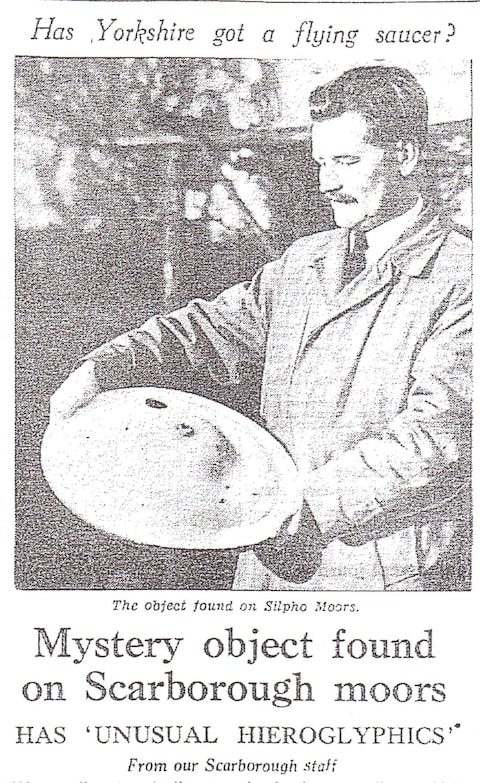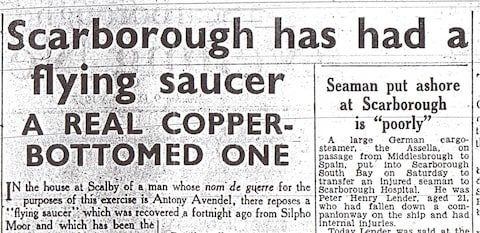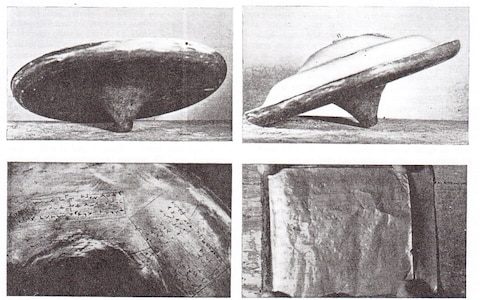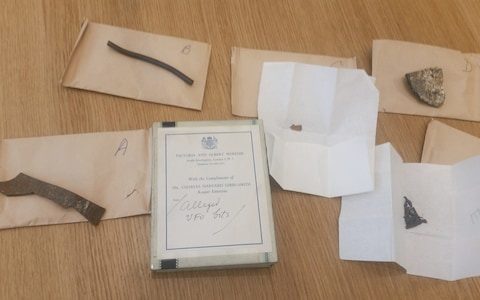The lump of metal discovered on Silpho Moor near Scarborough, North Yorkshire, in 1957 was so strange that it was dubbed the 'Silpho UFO'.
The disc, which was 16 inches in diameter and weighed 22 lbs was inscribed with hieroglyphics, similar to the wreckage of the so-called spacecraft found at Roswell, New Mexico in June 1947.
When the object was cut open a book made of 17 thin copper sheets was found inside, with each sheet covered in more hieroglyphs.

The remains were sent to the Natural History Museum in London where experts concluded it was probably an elaborate hoax as there was no evidence the metal had come from elsewhere in the Solar System, nor had suffered high temperatures of entering the Earth's atmosphere.
Even so, Air Chief Marshal Lord Dowding continued to believe that the object was extra-terrestrial, and said he had personally examined the it in 1959, and found it to be a 'miniature flying saucer.'
Yet it was unclear what happened to the object after that, with members of the UFO community believing it had been deliberately scrapped.

It was only discovered after Dr David Clarke of Sheffield Hallam University, recently gave a talk on the release of the Ministry of Defence's UFO files at the Science Museum.
"One of the museum staff tapped me on the shoulder and asked if I was aware that "bits of a flying saucer" had been kept in a cigarette tin in the museum group store for decades.
"I was absolutely amazed when later we opened the tin box and saw the wreckage. It was obvious these were the remains of the missing Silpho Saucer that some have claimed as Britain's answer to the famous Roswell incident.
'It's incredible to hear that pieces of this mystery object have been sitting in a museum archive for more than half a century".
Andy Roberts, former editor of UFO Brigantia magazine, said the Silpho Saucer story was Britain's answer to Roswell incident, in which a crashed 'flying saucer' was allegedly spirited away from a ranch in New Mexico in 1947.
He said: "This is an amazing breakthrough. It's incredible to hear that all this time pieces of this mystery object have been sitting in a museum archive."
The 'flying saucer' was originally found by Scarborough businessman Frank Dickenson, who was driving near the moor with two of his friends when they spotted a glowing object in the sky that appeared to fall to the ground.
He found the metallic saucer lying in a patch of bracken and returned to his car to tell his friends, when they made their way back to the wreckage it was gone.
Frank was desperate to find the wreckage and placed an advert in the local paper and a man came forward and sold it to Frank for £10.
After buying the wreckage back Frank, Anthony Parker and Phillip Longbottom forced the object open to find traces of ash, glass and the copper book inside.





Reader Comments
to our Newsletter